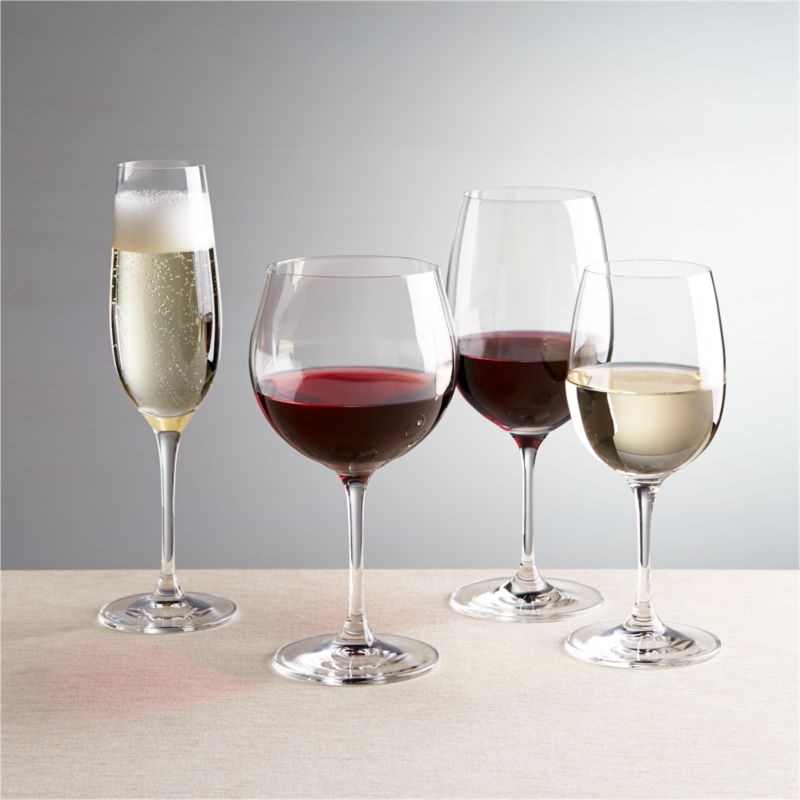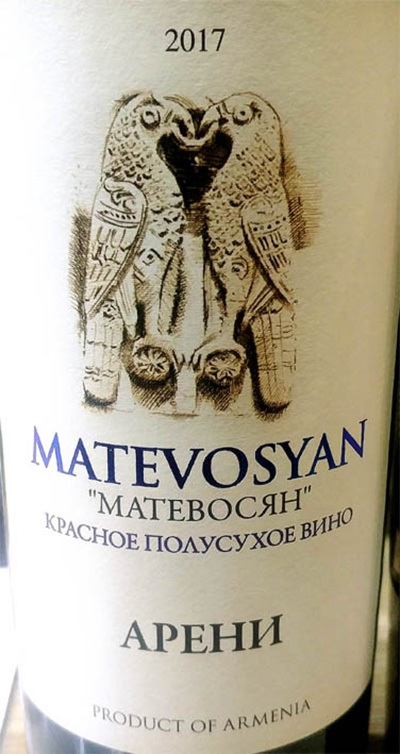Wine brings joy, and dry red is also good for health. In this case, two conditions must be observed: its use must be moderate, and the product must be of high quality. Choosing a good dry red wine is easy once you know what to look for when buying. The editorial staff of the site "bestx.htgetrid.com/en/" offers an overview of "The best dry red wines for 2020", compiled according to the opinion of buyers and experts.
Content
- 1 What wines are there
- 2 Benefit and harm
- 3 How to choose the best wine
- 4 What to look for
- 5 Top manufacturers
- 6 Where can I buy
- 7 Life hacks
- 8 Rating of quality dry red wines
What wines are there
Wine is the name given to alcoholic beverages obtained by fermenting the juice of various grape varieties. Let's consider what they are.
By color
- white, cooked white berries;
- red, made from red and black varieties;
- pink, obtained using a certain technology, regardless of the color of the berries used;
- orange, made from white berries, using a technology similar to the production process for pink.
By sugar content
Dry
During fermentation, grape juice becomes an alcoholic beverage. At the same time, the yeast converts the sugar contained in the berries into alcohol. Dry wine is a wine in which sugar is completely processed, which is called dry. The alcohol content ranges from 8 to 15%, sugar - no more than 4 g / liter.
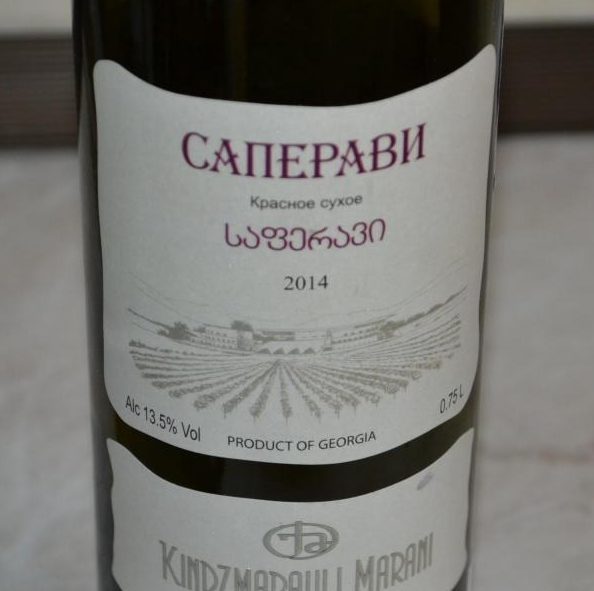
Semi-dry and semi-sweet
The fortress is the same. The sugar content in semidry reaches 18 g / liter, in semisweet - from 18 to 45 g / liter. Since our review is devoted to dry wines, we will not focus on other types.
Alcohol content
According to this criterion, they are divided into natural and fortified.
Natural
These include dry, semi-dry and semi-sweet. They are called natural because they contain only the alcohol that was formed during fermentation.
On a note! Vinification is the process of converting grape juice, as a result of which the natural sugar contained in the berries is converted into alcohol.
Fortified
Drinks with added ethyl alcohol are called fortified. Alcohol is most often added so that the product does not "sour", i.e. did not turn into vinegar. In addition, alcohol is added to some brands strictly according to technology. This is how:
- port wine;
- Marsala;
- sherry;
- vermouth.
Some types of Tokay can be fortified.
Colour
Dry red is obtained from red and black varieties:
- Merlot;
- Cabernet;
- Cabernet Sauvignon;
- Pinot Noir;
- Shiraz;
- Grenache.
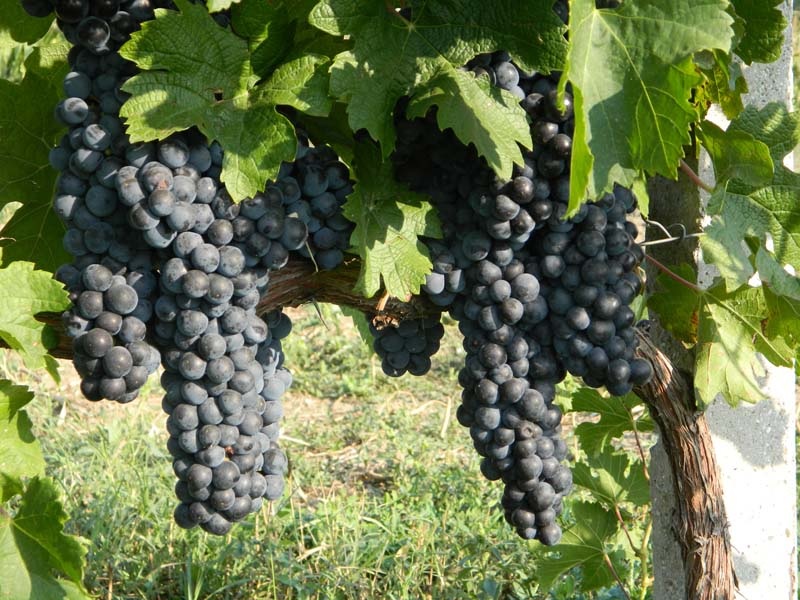
Today these varieties can be called international. They are cultivated in Europe and overseas, in various regions of Russia, in Georgia. Armenia and Moldova.
In Italy they are proud of their varieties:
- Sengiovese;
- Rondinella;
- Perricone;
- Nebbiolo;
- Montepulciano.
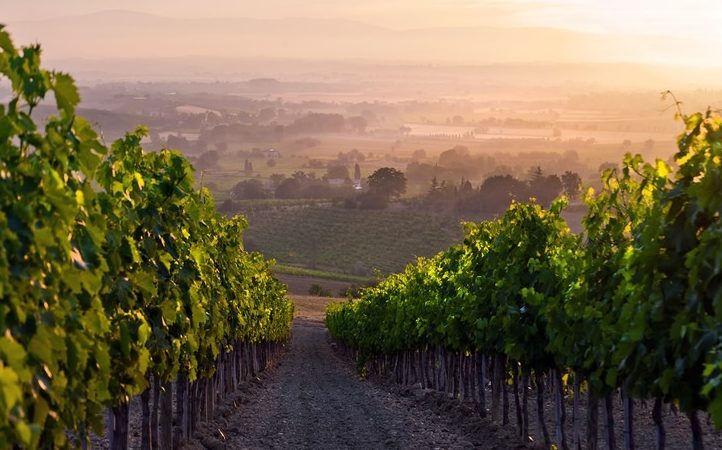
Spain is famous for its varieties:
- Tempranillo;
- Monastrell;
- Garnacha (analogue of the French Grenache).
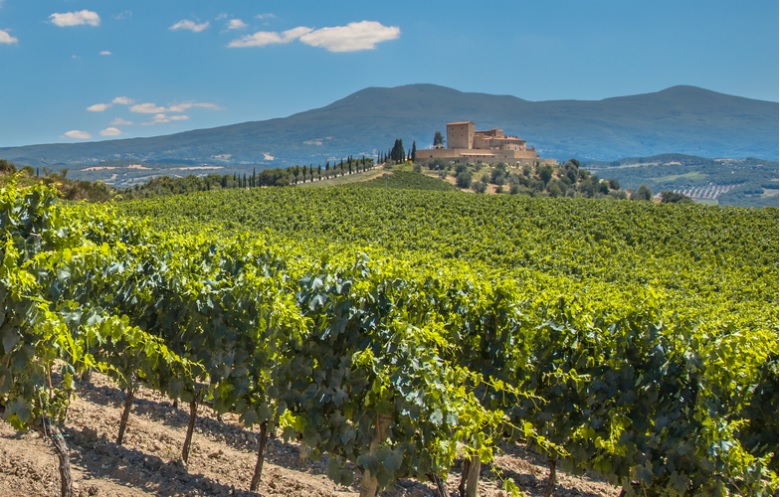
A rich red color is given by dyes concentrated in the skin, seeds and crests of berries.
On a note! The twigs on which the berries are suspended are called combs. Today, more and more combs are removed before vinification begins. They take up too much space in fermentation vats and give the wine a specific smell.
What is the difference between red and white wine besides color? White is aged without skin, pits and ridges, red - on the contrary. If it is prepared from red and even black berries without the skin, the red color will not work.
Benefit and harm
Scientists still argue about the benefits of red. Still, there are more statements that it is red wine that brings health benefits. It has a beneficial effect on the state of the cardiovascular system, thins the blood, increases hemoglobin and the number of red blood cells, increases sexual activity and protects against cancer. All this is true when the daily dose does not exceed 150 g. And all the beneficial properties are harmful if this dose is regularly and seriously exceeded. So everything is good in moderation.
How to choose the best wine
Consider the main selection criteria.
First, let's decide on the purpose of the purchase.
Present
In this capacity, white and sparkling are most often bought. Red dry as a gift can be presented to a true connoisseur. In this case, it is worth choosing elite samples of French, Italian or Spanish production. It must be remembered that it will cost very, very expensive.
For a regular dinner
It all depends on what is served on the table. According to the iron rule, dry red is served with red grilled meats, cold cuts and cheeses. A light and inexpensive "potion" worth up to 500 rubles will be enough for this.
Price
An important criterion. The parameter may fluctuate in different stores, but without striking differences. The formation of the price of a drink depends on its origin. How much a product costs depends on how many buyers there are.
Geography of winemaking
Europe
Traditionally, high-quality production facilities are located in France, Italy, Spain, Portugal, Germany and Austria, something interesting can be found in Hungary and the Czech Republic. Including VAT and delivery, they will definitely be more expensive than a domestic product. A quality product can be found for 800 - 1000 rubles. A product worth up to 1,500 rubles will delight the buyer with taste. Bottles worth about 2,500 rubles are good for presenting it to a friend.
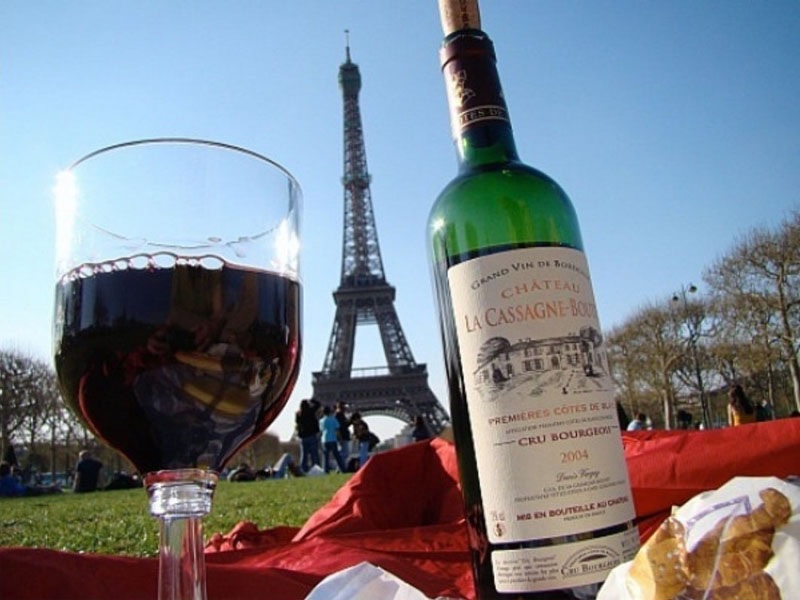
Overseas drinks
This category includes manufacturers from the USA, Chile, Argentina, Australia and South Africa. The nature in these countries is so generous with warmth that local specialists take off two crops a year and are able to produce more product than their European counterparts. This also affects the price. You can find very high quality products within 600 rubles. For 1000 rubles, you can find vintage, and for 2500 - elite.
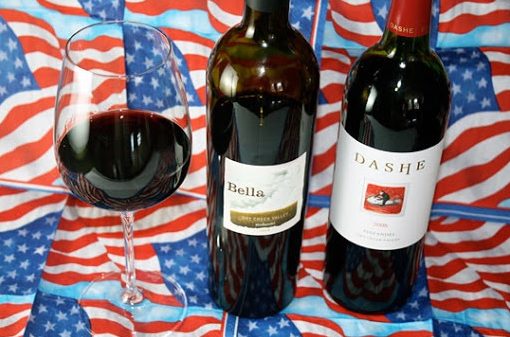
Domestic wines
From Russian, the goods of Crimea, Kuban, Don region and Dagestan deserve attention. Within 200 rubles, it is not always possible to buy a drink of decent quality, which is not inferior, for example, to the Chilean one. Therefore, it is better to focus on bottles with a price tag of 400 to 1000 rubles. Less risk of running into a fake. It is better to focus on products marked PGI (Protected Geographical Indication). This is a guarantee of quality. They are made from material collected in close proximity to production. So the Belarusian "potion" (for example) made from imported materials cannot be of high quality by definition.
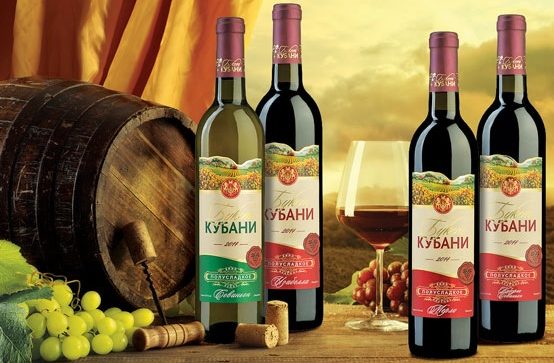
Products of the former union republics
It is worth noting Georgian and Moldavian ones here. Among the Moldovan factories, the leading positions are occupied by the oldest productions Cricova and Purcari (Cricova and Purcari). In addition, these enterprises are famous for their cellars, the largest in Europe.
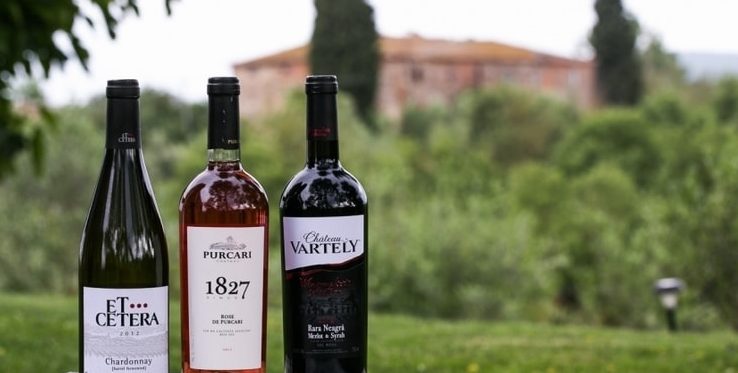
Even teetotalers know the names of the best Georgian wines. Everyone knows what Khvanchkara or Kindzmarauli (semi-sweet) are. If we talk about popular brands of dry red, these are Mukuzani, Kvareli and Teliani.The Abkhazian "Rada" and "Chegem" receive the best reviews.
Interesting! Today, the number of Georgian products on store shelves exceeds the production capacity of Georgian factories. Simply put, the buyer can easily run into a "fake".
We strongly recommend that you carefully read the information on the counter label before purchasing. If there is no indication that the product was produced and bottled in Georgia, it is better to return it to the shelf.
What to look for
Read labels and especially counter labels carefully. They must contain complete information: where the crop was harvested, what varieties were used. Some manufacturers sell the so-called. wine drink, indicating this fact on the counter-label in small print. It will be a shame to buy such a surrogate and discover it only by removing the sample.
The presence of an excise stamp is required. Its absence may indicate that in front of you is the left product. There is no need to stutter about any quality.
It is difficult to determine quality by color while the product is in the bottle. But if you manage to consider something, then it is better not to buy a product whose color is brown or terracotta. Also, make sure that the contents of the bottle are not cloudy.
Corked bottles are a tradition. However, do not despair if you get a vessel with a screw plug. Firstly, it may mean that this is young wine. This type of beverage is specially sealed with screw caps. In addition, natural corks can suffer from cork disease, from which the contents of the bottle become unusable.
When purchasing Italian wines, look for the following marks on the labels, indicating the quality of the product:
- VDT - Vino de Tabola. Ordinary table wine. The variety of material and the geographical location of the plantations are not defined.
- IGT - the so-called. local wine. The label indicates the harvest year, locality, grade of material, type and color. The authenticity of the specified data is not controlled, but the category is assigned based on the reputation of the farm.
- DOC. Drinks with this mark are made from material cultivated for the so-called. official plantations of certain regions. Sugar is not added to the wort during the production process. Prohibited by law. For DOC products of some regions, strict requirements (standards) are set for color and aroma. Their observance is under the control of a commission of qualified tasters.
- DOCG. Products of the highest Italian quality. The requirements and controls are even stricter than those for DOC wines.
Something similar to the Italian quality classification exists in France:
- Vin de France. These are cheap drinks not of the highest quality. The geographical location of the plantations is not controlled. The variety of berries can be specified. Choosing a product of this quality category, the buyer can only be sure that the product came from France.
- IGP. In our concept - wine of a protected geographical indication. The quality is much higher and so is the price.
- AOP. Appelation d'Origine Protegee, Same as our PGI. Vintage wine labeling. Everything is controlled, from the geography of planting, varieties and quality of berries, to all stages of production and subsequent aging. At the final stage - obligatory tasting.
Top manufacturers
There are a lot of them, especially among foreign products, where this family business has been developing for centuries, and the secrets and production technologies have been passed down from generation to generation. Let's get to know the best of them.
France
The world's best dry red wine brands are produced here. All manufacturers, perhaps, can not be listed. It is easier to name appellations (wine-growing areas), for example Bordeaux, Chablis, Champagne, Lagedoc and Roussillon, Alsass, etc. Some farms can be called Chateau (Chateau) + proper name. This is the so-called. castle farms (Chateau - castle).
Château Haut-Batailley
An old family production with a worldwide reputation. Bordeaux region. Products are traditionally distinguished by sophistication, elegance and consistently high quality.
Château Léoville-Las Cases
Bordeaux again. This region does not produce low-quality wines.
Château Lagrange
If Bordeaux is the region where the best red wines are produced, then Château Lagrange is the best brand in Bordeaux. The farm was founded in the 17th century. Today it is the largest and oldest enterprise in the region.
Italy
Settesoli
Sicilian cooperative. Founded in 1958. The business was started by 68 local owners. Today their number has reached 2000. The quality of products is guaranteed by traceability and control of all stages of production, from growing crops to clogging finished products. The company's success was awarded the title of "Best Manufacturer of the Year in terms of price-quality ratio" in 2009.
Marchesi de Frescobaldi
The oldest Tuscan family Friscaboldi. Has been manufacturing for seven centuries. Its products have been supplied to the British royal table since the XIV century. Today, the company's products are exported all over the world and are known in more than 60 countries.
Bonacchi
A young family business founded in 1965. Owns 85 hectares of vines throughout the Tuscan region. Produces elite and light drinks of a modern style and with an excellent value for money.
Russia
Massandra
Crimean wine was and remains the best in Russia. The history of one of the oldest wineries in Crimea goes back a hundred years. This farm reached fame during the period when Count M.S. Vorontsov owned it. Today the Massandra collection consists of more than a million bottles, which has been recorded in the Guinness Book of Records.
Inkerman Vintage Wine Factory
Founded in 1961. Today, the renewed company produces inexpensive and high-quality wines, popular not only in our country, but also abroad.
Kuban-Wine
The company was founded in 1953. Today it is a full-cycle enterprise. Material from their own plantings comes to the shops directly from the "bush". The production of three brands has been established: Chateau Taman, ARISTOV, Vysokiy Bereg. Produces 56 million bottles of quality wine annually at affordable prices.
The list of the best manufacturers is endless. A separate review should be devoted to this. Which company is better to buy wine - the buyer decides. If in doubt, you should first listen to useful advice and recommendations from experts, sales consultants, use the information gleaned in our review.
Where can I buy
There are more than enough specialized stores today. Another thing is what is there on the shelves. It is better to buy high-quality alcohol in specialized stores, like Red and White or WineStyle, Magnet, Lenta, etc. Fanagoria has its own chain of stores. Almost all of these companies have their own websites, where you can get acquainted with the description of products and characteristics of drinks, get expert advice. If there are no specialized outlets nearby, you can order online the product you like in the online store.
Life hacks
For lovers and connoisseurs of a noble drink, we offer several original solutions that will help to maintain pleasant impressions of the dinner party, in the event of some unpleasant situations.
- The corkscrew is gone. Sometimes it happens. Do not despair. You can gently push the cork into the bottle with a long object (a pencil will work). Then, if there is any tape in the house, fold it in a loop, put it in the neck of the bottle and pry off the cork. With a little knack, try to get the cork upright on the tape and remove it from the bottle. It did not work. And it is not necessary. You can leave it floating until you empty the bottle.
- You need to chill the bottle quickly. Fill a small bucket with ice cubes and salt and put the bottle in there. The salt will quickly cool the melted ice, and in cold water the contents will quickly reach "condition".
- Everyone knows that a wine stain on a shirt can be removed with salt. There is another way. Pour milk on a fresh stain and leave the shirt for an hour, then wash it in cold water. Helps.
- It so happens that a little wine remains in the bottle. This is not enough for a good sip, and we are not used to being content with little. What to do Freeze it in an ice cube tray.This "cube" can always be added to a sauce, soup or drink. Of course, these are not all possible "wine life hacks". We have selected only the most interesting for our review. If anyone has something to add, we are waiting for your comments.
Rating of quality dry red wines
Drinks worth up to 500 rubles
5.Cricova "Heritage Range"

Products of Moldova. Manufacturer - Cricova company. Mono-varietal (Merlot 100%), grown on plantations in the south of Moldova. Ruby red color. A drink of soft, balanced, fruity taste. Served with meat and cheese snacks. The average price is 329 rubles.
Advantages:
- Nice colour;
- wonderful bouquet;
- affordable price.
Disadvantage:
- not identified.
4.Villa star Cabernet Sauvignon - Tsimlyansky black

The following varieties were used for preparation:
- Cabernet Sauvignon. Content - 70%.
- Tsimlyansky black. Bred on Don at the beginning of the 18th century.
Interesting! In 1717, King Louis XIV of France received twenty barrels of red wine made from Tsimlyansky black berries as a gift from Emperor Peter I.
Russian-made drink. The color is purple-ruby. The wine has an expressive aroma, with the presence of fruit notes (black currant, prunes, dried fruits). Served with grilled or stewed meat, barbecue, cheese. The average cost is 432 rubles.
Advantages:
- excellent taste and aroma;
- amazing color;
- inexpensive.
Disadvantages:
- not identified.
3.Phanagoria Author's wine Cabernet Sauvignon, Saperavi

Produced by one of the largest farms in Russia - Fanagoria. Prepared from famous varieties:
- Cabernet Sauvignon - bred in France, the second most common in the world after Merlot;
- Saperavi is an ancient variety bred in Georgia, grown in all farms in the south of Russia, Ukraine and Moldova.
The color resembles a pomegranate. Famous for its intriguing aroma, with fruits and spices. Pleasant, balanced with hints of berries and fruits. It goes well with grilled meat: barbecue. Average cost: 442 rubles.
Advantages:
- delicious;
- with a memorable aroma;
- inexpensive.
Disadvantages:
- not.
2.Luis Felipe Edwards Carmenere Pupilla

Made in Chile by Luis Felipe Edwards, Calchaki region. Single-varietal, 100% from Carmenere berries, bred in the Medoc region, Bordeaux province. The color of the drink is ruby-red. The aroma is fruity and chocolate, with nuances of fragrant tobacco and spices. The taste is distinguished by volume and juiciness, soft roundness of tannins, notes of berries. Served with meat snacks. The average cost of a bottle will be 473 rubles.
Advantages:
- surprisingly pleasant aroma;
- monosortic;
- affordable for everyone.
Disadvantages:
- screw plug.
1. "Marques Villanueva" Tempranillo, Carinena DO

The Spanish dry red gets the best reviews from the producer Grandes Vinos y Vinedos of the Autonomous Community of Aragon. The DO mark (denominación de origen) means the best production. Saturated color. Pleasant fruit-berry taste, soft tannins. Floral aroma with hints of fruit. Monosortic, 100% Tempranillo. Game, cheese goes well under it. The average cost is 356 rubles.
Advantages:
- delicate refined aroma;
- inexpensive.
Disadvantages:
- screw plug.
Wines worth from 599 to 1000 rubles
5.Chateau Grand Voile, Bordeaux AOC

At this price point, France is represented by a drink from the province of Bordeaux. Producer Maison Bouey (Maison Bouey), one of the largest companies, the owner of the largest wine cellars in these parts. Garnet color. Aroma ingredients - candied fruits, black currants, spices. The wine will delight connoisseurs with its fresh taste, in which all its components are balanced: rich bouquet, fruity sourness, delicate tannins. The average cost is 594 rubles.
Advantages:
- rich bouquet;
- low price.
Disadvantages:
- absent.
4.Inkerman Cabernet "Kachinskoe"

Produced by the Inkerman Factory of Vintage Wines. Monosortic. One and a half years of aging in an oak brand. It has a complex and floral-fruity aroma. The taste is harmonious with pronounced Cabernet tones, complemented by hints of oak. The alcohol content does not exceed 13%. Inexpensive. The average cost is 628 rubles.The best dry red in Russia, according to Roskachestvo.
Advantages:
- tasty and aromatic;
- affordable price.
Disadvantages:
- not identified.
3.Merlo "Elbuzd"

Dry red, from the young, dynamically developing Don company "Elbuzd". Monosortic. The alcohol content does not exceed 15.5%. The color is garnet with ruby. Rich berry-fruity taste. Fullness and sonority of berry shades are provided by soft tannins. Served with poultry. It harmonizes with spicy cheese, grilled meat. The average cost of a bottle will be 825 rubles.
Advantages:
- pleasant to drink;
- complex aroma.
Disadvantages:
- the alcohol content is somewhat high.
2. Familia Zuccardi, “Fuzion” Tempranillo-Malbec

Argentinean, from the family business "La Agricola". Made from Tempranillo and Malbec varieties, hand-picked from the plantations of the Mendoza region. Differs in a lively, velvety creamy taste, fruit and berry aroma, achieved as a result of seven days of aging on the pulp. The color of the drink is intense, purple-red. Served with fried lamb, beef fillet, game. The average cost is 673 rubles.
Advantages:
- pleasant to drink;
- memorable aroma.
Disadvantages:
- not.
1.Sattesoli, “Randone” Chianti DOCG, 2017

Dry red from one of the largest Italian cooperatives Satessoli. Mono-varietal, 100% Sangiovese, harvested from the plantations of a cooperative in Sicily. Vintage 2017. The DOCG label is given to wines of guaranteed and controlled origin. It is the highest quality mark in the Italian classification. So here we have the Chianti "Randone" of the 2017 crop. The alcohol content does not exceed 13%. The color is red with ruby, dense. Fruit and berry taste .. Thin armat, chocolate with fruit and coffee. The average cost is 921 rubles.
Advantages:
- complex aroma;
- wonderful bouquet.
Disadvantages:
- not.
Review of elite wines
5. Antinori, "Tignanello" Toscana IGT 2016

Product from Tuscany (Italy) from the manufacturer "Antinori". Produced from three varieties:
- Sangiovese - 75%;
- Cabernet Sauvignon - 20%;
- Cabernet Franc - 5%
The alcohol content does not exceed 14%. The abbreviation IGT on the Indicazione Geografica Tipica label indicates that this product is categorized as a beverage by geographical location. A kind of quality category like "PGI" on Russian wine labels. For buyers, a similar label informs that the products have passed control for the types of material used, the alcohol content, the applied production technology.
The color of the drink is lively, ruby red. The aroma harmoniously combines the smells of wild berries with fresh blackberries. The taste is refined, balanced. Served with fried red meat, game, cheese. The average cost is 14,910 rubles.
Advantages:
- richest aroma;
- exquisite bouquet.
Disadvantages:
- the price is not for everyone.
4. Errazuriz “La Cumbre” 2013

An excellent Chilean wine from the old Syrah (Shiraz) variety with the addition of a small amount of Mourvèdre, harvested by hand on plantations belonging to the Errazius farm in the Aconcagua region. The harvest is delivered to the workshops in fifteen-kilogram boxes and sorted. Impurities and spoiled berries are removed. Collected in different areas, the material is processed and vinified separately.
The third is often cryomacerated. Further, the fermentation process continues at a temperature of 26 to 30 ° C. At the last stage, the finished product is aged in oak barrels for at least 221 months.
The taste is round, juicy with a harmonious combination of fruits and resins. The finish is incredibly long. The aroma is filled with floral and berry tones, harmoniously combined with a subtle smell of smoked meats and spices. Served with fried meat, mature cheese. The average cost of a bottle with a volume of 0.75 liters will be 14,996 rubles.
Advantages:
- complex harmonious aroma;
- balanced, delicate bouquet;
- saturated color.
Disadvantages:
- the price bites.
3.Pagos Viejos Reserve Artadi 1995

Elite Spanish from the manufacturer Artadi. Single-varietal, from Tempranillo, 1995 harvest from the plantations of the Rioja region. The alcohol content does not exceed 13.5%. The color is pleasant dark ruby. The taste is intense, clean, balanced.The scent is simply gorgeous. Here you can find blackberries with cherry liqueur, smoke, anise and grilled meats. Served with meat and game. The average cost of a 0.75 liter bottle is 31,304 rubles.
Advantages:
- clean, balanced taste;
- luxurious aroma.
Disadvantages:
- is very expensive.
2.Opus One 2015

California wine. Produced by the famous company, one of the founders of which was Baron Philippe de Rothschild, the creator of the Chateau Mouton brand. The drink is powerful, intense, ruby-colored, aged in an oak container. The complex and rich aroma is reminiscent of black currant liqueur, toasted oak. Then there are notes of dried berries and spring forest. The taste reminds of black currants, blackberries, cherries, emphasized by soft tannins.
A very stylish wine that is in no way inferior to the best drinks from Bordeaux. Prepared from French varieties grown in the Napa Valley, north of San Francisco. Served with game, meat, cheese. The purchase will cost 71,490 rubles. A great gift for the anniversary.
Advantages:
- perfect taste;
- wonderful bouquet.
Disadvantages:
- expensive.
1. Chateau Latour Pauillac AOC 1-er Grand Cru Classe 2000

The famous French Chateau Latour. Produced in the French region of Pauillac, province of Bordeaux. Berries of old French varieties are being prepared:
- Cabernet Sauvignon - over 70%.
- Merlot - about 16%.
- Cabernet Franc - only 4%.
- Petit Verde - no more than 3%.
Harvest in 2000. Has a dark ruby, almost purple color. The taste is excellent. Here blackcurrant jam and raspberries, oak and roasted nuts, dark chocolate and minerals. All components are repeated in a unique aroma. Served with exquisite dishes: veal fricassee, turkey schnitzel, truffles, Peking duck, Parma ham and blue cheeses. The bottle will cost the buyer 214,990 rubles.
Advantages:
- drink of unique taste;
- the aroma is no less amazing;
- very rich color.
Disadvantages:
- the pleasure is extremely expensive.
Dry red is an excellent product that can turn an ordinary lunch or dinner into a holiday, provided it is consumed in moderation. Of course, each customer has his own taste preferences. Our TOP 15 best dry red wines does not claim to be the ultimate truth.
The purpose of the article is to answer a number of questions that arise during the purchase: what is it, why is it dry, how to choose the best, and which company is the best product to buy. The editors of the site hope that with its help it will be easier for our visitors to navigate in the variety of brands and varieties, countries, names and brands, so as not to make mistakes when choosing.

